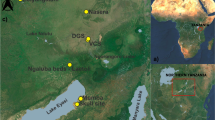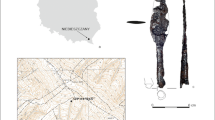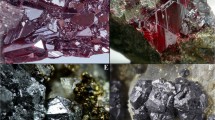Abstract
Built by the royal family in the Ming Dynasty, the Da Bao En Temple is known as the greatest temple in ancient Nanjing, whose predecessor is the Chang Gan Temple built in the Six Dynasties. Archaeological excavations of the Da Bao En Temple and the underground palace of Chang Gan Temple built in the North Song Dynasty (AD960-AD1127) have been appraised as one of the 10 greatest archaeological discoveries in 2010 in China. Many artefacts discovered in the underground palace have shown their important historical meanings and scientific values, such as the Qibao King Asoka Tower, golden and silver coffins, Buddhist relics, the silk textiles, glasses, and spices etc. In this paper, stereomicroscope, SEM-EDS and LA-ICP-AES are used to investigate chemical composition, microstructure and current preservation status for the unearthed glasswares. The results indicate that the glass bottle coded as TH1 and the glass calyx coded as TN5 are made of lead-silicate glass, while the chemical composition of the glass bottle coded as TN9 is quite distinct from that of native glasswares. All three articles have been weathered in some degrees. Given the shape, it is deduced that TH1 is a typical glassware used in burying Buddhist relics at that time, TN5 a domestic glassware with typical Sassanian style, and TN9 an imported Islamic glass, providing important information about culture exchanges between China and the foreign countries in the North Song Dynasty.
Similar content being viewed by others
References
Huang Q S. Summary for Guangxi ancient glass research (in Chinese). Corpus of Guangxi Archaeol, No 2. Beijing: Science Press, 2005. 124–135
Gan F X. Origin and development of ancient Chinese glass (in Chines). Chinese J Nat Mag, 2006, 28 (4): 187–193
Building Materials Institute, Tsinghua University, Institute of Archaeology of Chinese Academy of Social Sciences. Inspection report of Chinesse early glass wares (in Chinese). Acta Archaeol Sin, 1984, (4): 449–457
Zhang F K, Cheng Z H, Zhang Z G. Study of Chinese ancient glass (in Chinese). J Chinese Cer Soc, 1983, 11 (1): 67–75.
Dingxian County Museum. Two temple sites at Dingxian County in Hebei Province (in Chinese). Cultural Relics, 1972, (8): 39–48
Jin G. Three-colour glazed pottery glaze tower and other cultural relics from Dingxian County in the Northern Song Dynasty (in Chinese). Cultural Relics, 1972, (10): 65–66
Qin M Z, Liu D Z. Stone coffin at Lingtai County (in Chinese). Cultural Relics, 1983, (2): 48–52
Lianyungang City Museum. Record of Lianyungang HaiQing Temple Ashoka Tower (in Chinese). Cultural Relics, 1981, (7): 31–38
Qi D F, Zhang J. Spread and evolution of Sassanian style—Multi petals oblong bowls in China (in Chinese). Cultural Relics, 1998, (6): 63–73
An J Y. Glass History (in Chinese). Beijing: Encyclopedia of China Publishing House, 2000. 154–155
Institute of Cultural and Historical Relics and Archaeology of Inner Mongolla Autonomous Region. Preliminary report on grave of princess consort in the Liao Dynasty (in Chinese). Cultural Relics, 1987, (11): 4–24
Archaeological Team of Tianjin History Museum. Dule Temple at Jixian County in Tianjing (in Chinese). Acta Archaeol Sin, 1989, (1): 83–119
Charieston R J. A Group of Near Eastern Glass. The Burlington Magazine for Connoisseurs, 1942, 81: 212–218
Henderson J, Challis K, O’Hara Sarah, et al. Experiment and innovation: early Islamic industry at al-Raqqa, Syria. Antiquity, 2005, 79: 130–145
Liu J L. Bowls from Yue kiln in Tang Dynasty found at Nishapur in Iran (in Chinese). J Nat Mus Chin Hist, 1981, 3: 87–88
Author information
Authors and Affiliations
Corresponding author
Rights and permissions
About this article
Cite this article
Yu, N., Song, Y., Yang, Y. et al. Study on the glasswares discovered in the underground palace of the Da Bao En Temple in the North Song Dynasty (AD960-AD1127) in Nanjing, China. Sci. China Technol. Sci. 55, 2006–2012 (2012). https://doi.org/10.1007/s11431-012-4870-1
Received:
Accepted:
Published:
Issue Date:
DOI: https://doi.org/10.1007/s11431-012-4870-1




